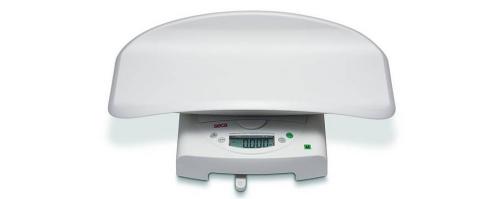Weighing Industry Jargon Buster - Advanced Terminology
-
 By
Solent Scales
By
Solent Scales - 4 Oct 2021
- 0 Comments

Every business sector has its fair share of technical language, often referred to as ‘jargon’, and the weighing industry is no different.

To clear any confusion, we’ve compiled a list of the most commonly used terms and provided a quick explanation to help enlighten you.
- Calibration Curve: The curve on a calibration graph comparing test results with standard loads. This helps to ascertain the scale’s current accuracy
- Cornerload: A scale’s ability to measure an object’s weight to the same degree of accuracy at the corners
- Dead Load: A fixed part of a weighing scale such as a weighbridge deck, this is not included in the final weighing measurement
- Divisions: The increments of weight a scale can display an object’s weight in. For instance a traditional analogue bathroom scale will display weight in 1 kg divisions
- Driver Operated Consoles: Terminals which can be used alongside weighbridges to enable the driver to quickly weigh the vehicle without leaving their cabin
- Declaration of conformity (DOC): Official documentation provided by suppliers of industrial weighing scales which acts as confirmation of the product’s build quality and adherence to relevant verification legislation
- Influence factors: Potential changes in the environment which can affect the accuracy of a scale. These can include temperature, altitude, humidity and pressure
- Legal for Trade: A form of certification for weighing equipment obtained by thorough testing. Legal for trade approved scales help to maintain honesty in the industry and avoid fraudulent transactions from occurring
- Linearity: A measurement of a scale’s ability to be equally sensitive throughout a specific weight range
- Live Load: A variable weight added to a weighing scale or transportation vehicle. This can be anything from chemicals in a laboratory or products being loaded onto a vehicle
- Load-Receiving Element: The part of a scale which is designed to hold the object being weighed. For instance, the platform of a weighbridge or laboratory balance
- Mass: The amount of physical matter present in a given object
- Repeatability: A way of gauging a scale’s ability to record and display the same weight multiple times. This is typically tested by using a controlled object and taking multiple measurements in succession.
- Reproducibility: A measure of a scale’s ability to display consistent results whilst operating under a variety of different environmental conditions
- RS232: A data communication interface commonly used to transfer data between weighing scales, computers and other devices. USB cables can sometimes be used as alternatives
- Safety Factor: A figure declaring the accepted overload weight which a scale can withstand before breaking
- Tare Weight: The weight of an empty transportation vehicle which is sometimes printed on its exterior to make calculating Net Weight easier
Solent Scales provides a number of industrial weighing scale services including supply, hire and calibration.
Learn more about our services by clicking here.







